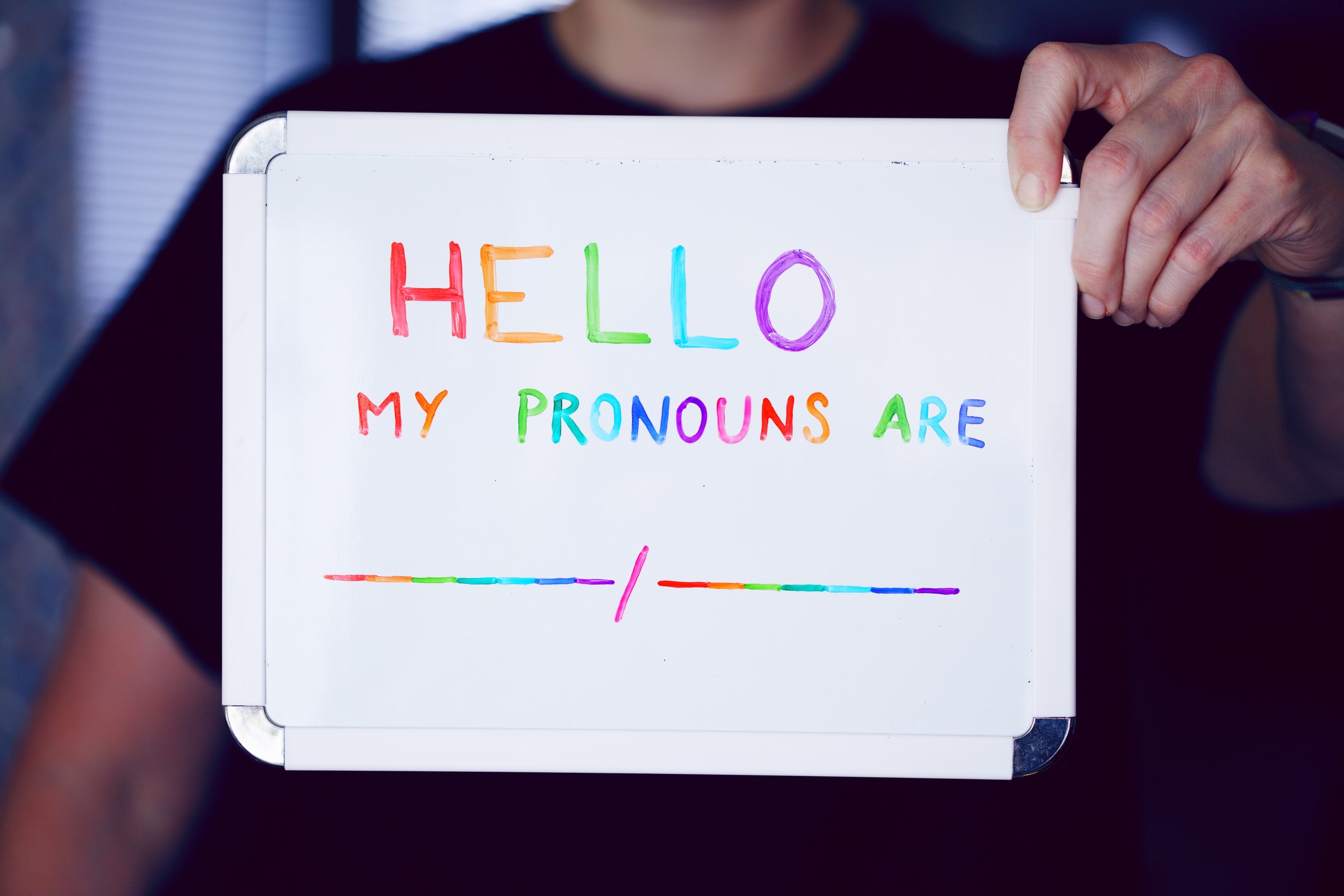Acknowledging Preferred Pronouns
We see it more commonly in social media, on email signatures and on Zoom calls: A person introduces themselves with their name, followed by their preferred pronoun. There are so many, like she/her, he/him, and they/them pronouns, among others. What do all of these pronouns mean, exactly? And why are preferred pronouns so important?
Pronoun usage can be second nature when talking about someone or to someone. Whether we know it or not, our assumption about a person’s pronouns can be dehumanizing to someone else when we get it wrong. While many people use the gender pronouns that align with their sex assigned at birth, there are also many who do not. In fact, some LGBTQ+ do not feel confined by the binary term of just “he/she”, but rather both or neither, like “they/them.”
Here are some tips and questions to consider when using pronouns:
“This isn’t what I’m used to or how things were done when I was growing up.”:
The exploration of one’s gender identity is more common now and more accepted today than ever before. Many strides have been made for the LGBTQ+ community, but equality is still a work in progress. If this is something you still are not comfortable with, remember that it isn’t about you — it is about the individual being acknowledged, seen, and heard. Referring to someone by their self identified pronouns is just basic to human dignity. It’s respectful. Think about how you feel when someone uses your name in conversation or just remembers it. That small detail makes you feel good, and it can make a huge difference for another person.
“What if I make a mistake?”:
When we refer to someone as he or she, we are assuming their gender only based on appearance or name. Sometimes we are so confident that we are right. Other times we make mistakes. That’s okay, it will happen from time to time. Just apologize and be more aware next time. Just as you might mispronounce someone’s name or get someone’s name wrong, the same goes for calling someone by a pronoun they do not identify by. Just correct it next time, or apologize in private and say you that will try better in the future.
“What if I’m not sure?”:
Don’t know? Just ask. It’s that simple.
“How can I be an ally?”:
You don’t have to identify as LGBTQ+ to also make your preferred pronoun usage known. Put it on your email signatures or social media profile. This will aid in normalizing the conversation around asking and acknowledging a person's pronoun preference. Not sure that is for you? That’s okay too. Think about how you utilize gender assumptions in your everyday vocabulary and make efforts to change them. For instance, have you ever referred to a group of people as “Ladies and Gentlemen?” Try using more neutral terms such as “Friends and Neighbors.”
Regardless of your choice to be an outspoken ally or not, the choice to acknowledge a person’s preferred pronouns is respectful. In some cases when mental health is a struggle, that affirmation could make a major difference in how the other person feels, and in your relationship in general.

